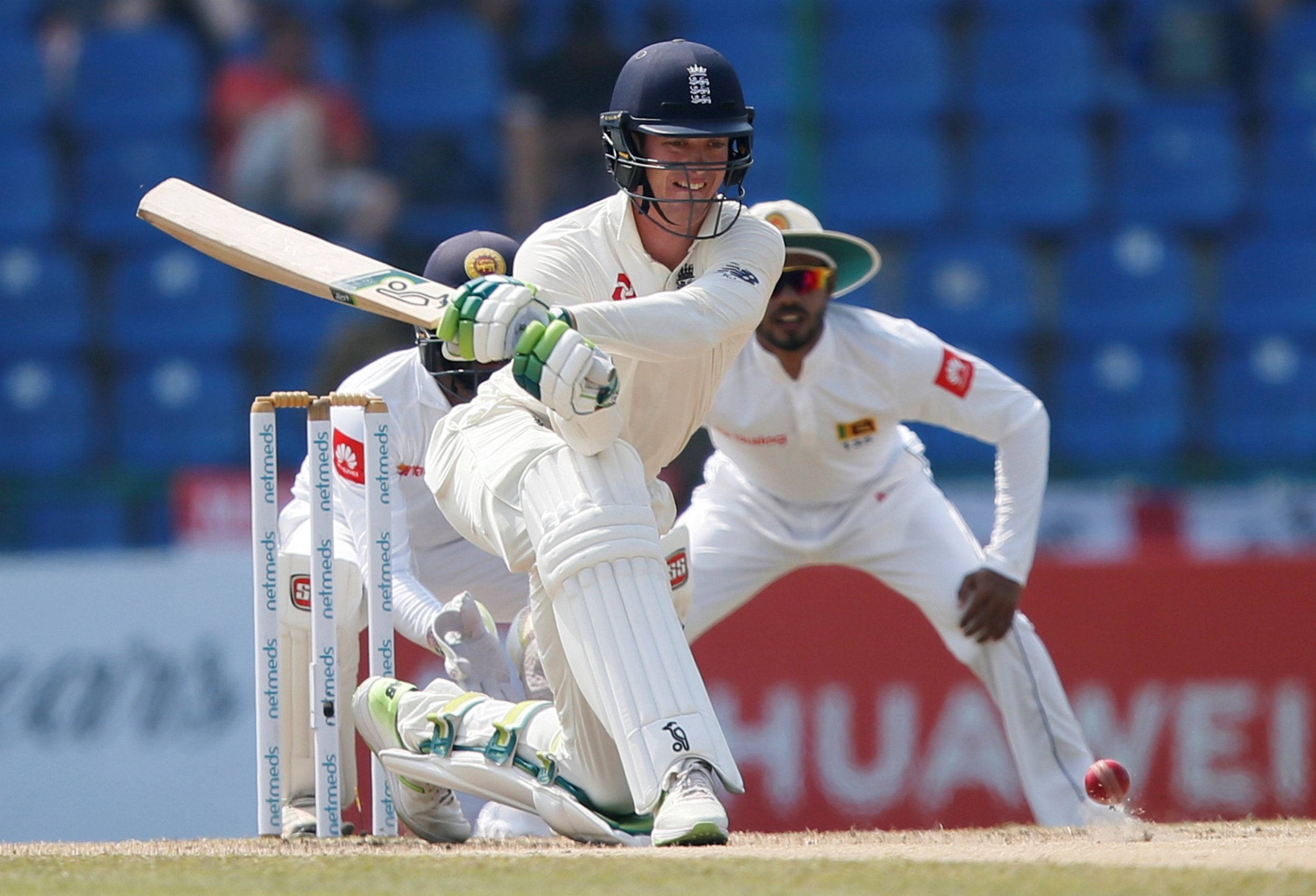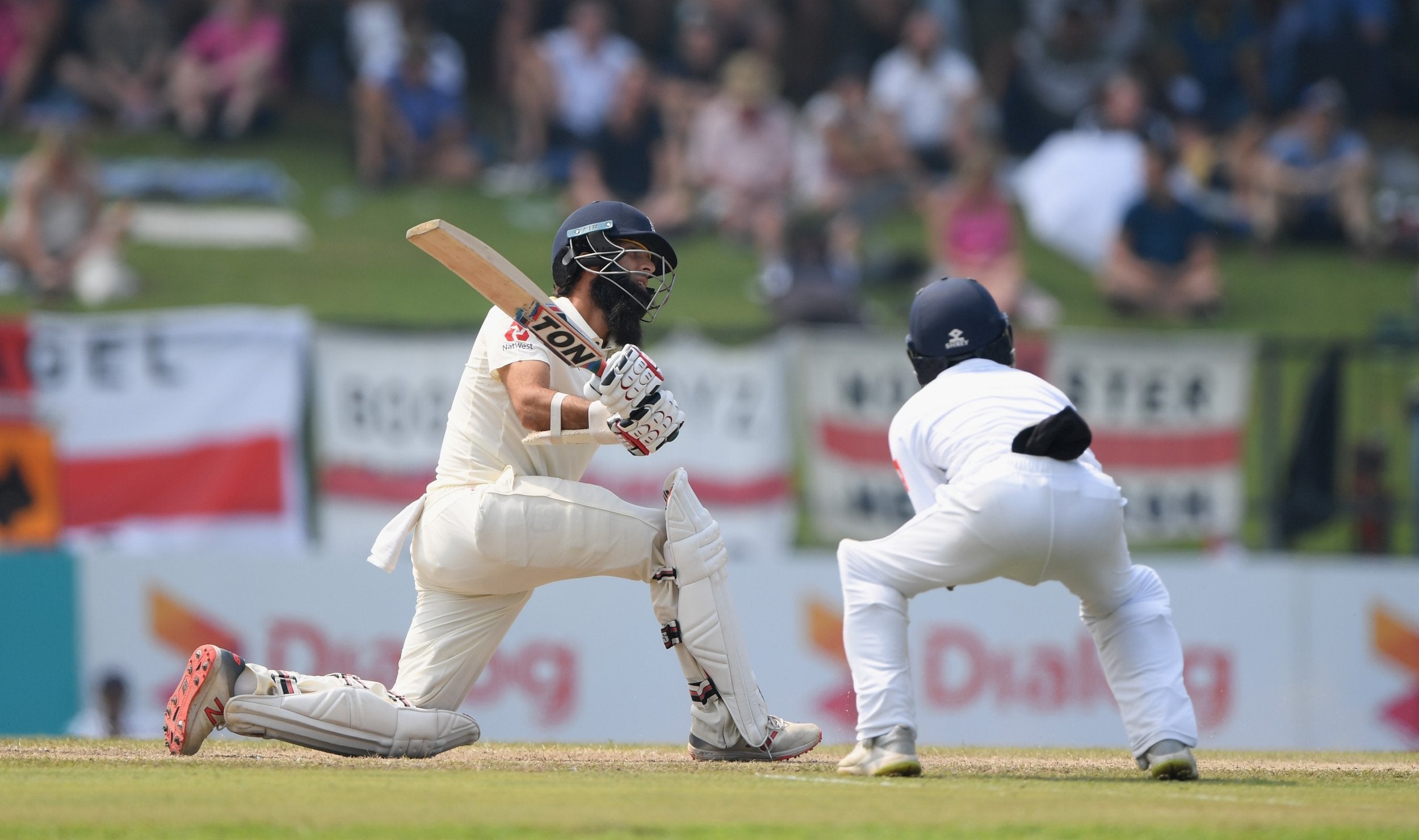England vs Sri Lanka: Joe Root's century caps off the 'day of the sweep' as England step closer to victory
England 290 & 324/9 lead Sri Lanka 336 by 278 runs: A day that encapsulated Root's new-look England took them into a commanding position

Your support helps us to tell the story
From reproductive rights to climate change to Big Tech, The Independent is on the ground when the story is developing. Whether it's investigating the financials of Elon Musk's pro-Trump PAC or producing our latest documentary, 'The A Word', which shines a light on the American women fighting for reproductive rights, we know how important it is to parse out the facts from the messaging.
At such a critical moment in US history, we need reporters on the ground. Your donation allows us to keep sending journalists to speak to both sides of the story.
The Independent is trusted by Americans across the entire political spectrum. And unlike many other quality news outlets, we choose not to lock Americans out of our reporting and analysis with paywalls. We believe quality journalism should be available to everyone, paid for by those who can afford it.
Your support makes all the difference.Joe Root celebrated only his second Test century on the Asian sub-continent with a flying air-punch as he led England, and very much his England, a huge step closer to a significant series victory over Sri Lanka.
While Root has had a very good series indeed as a captain and strategist, he was yet to truly contribute with the bat and had become a bit of a target after three consecutive dismissals to left-arm spinners.
This innings changed all that, and in a series where the team finally feels like his now that former captain Alastair Cook is no longer looming large, Root’s approach today was the very personification of the attacking cricket that has brought them success in Sri Lanka.
He has spoken numerous times about the need to score quickly, even if it means losing wickets, on surfaces where the ball is turning. With that in mind, most of this England batting line-up have had their own aggressive cameos in just four innings so far this series and this was Root’s turn, not just sweeping but later using his feet brilliantly and patiently waiting for the ball to use angles that found gaps in a questionably organised field.

Root and Trevor Bayliss have, from the outset, identified this series as an isolated unit of matches played in unique conditions and their squad is composed of the players that they feel will best help them get a victory here, specifically in these conditions, in order to move up the world rankings.
That is why Stuart Broad and Jonny Bairstow, mainstays of the Test side under any other circumstances, were wearing luminous bibs and tracksuit bottoms up on the England balcony. It is the same reason England have played a specialist wicketkeeper, albeit one who has proven important with the bat, for the first time in years. On a basic level it is horses for courses and on a more advanced level it is analytically-driven selection that has them on the brink of a historic series win on the sub-continent.
Not everyone will like the strategy and indeed, one former England international told The Independent that he felt Root and Trevor Bayliss were making a rod for their own back by toying with players’ selection status. A ‘ticking timebomb’.

That is an issue for future Joe to worry about, but in the present Root is reflecting on a century that the rest of us will recall as one of his best when he retires, a ton that might just win the match that wins the series in which England really became ‘Joe Root’s England’
In many ways, the sweep shot that took over the day is the perfect encapsulation of Root’s England, though it is yet to be seen if this attacking approach just applies to this tour or will continue throughout the world. The sweep, like its middle-order proponents today, is hit-and-miss. It’s boom-or-bust.
When England got low to sweep and connected with the ball it was invariably four runs or at least two, but when they missed it usually meant considerable trouble be that bowled like Jos Buttler, trapped like Rory Burns or caught like Keaton Jennings.
The story of England’s batting was pretty much ‘live by the sweep, die by the sweep’ and that began with a superb but later overshadowed innings by Burns, who played more sweep shots in this innings than any other of his career, reaching a maiden Test half-century in swift fashion before missing one that cannoned into his pads right in front.
Jack Leach had said after the second day’s play that the hardest time to bat on this pitch was when the ball was still hard as it would turn and zip in a way that it didn’t once the life and verve had been battered out of it.

Burns negotiated this period brilliantly to build England a platform, and his sweep-heavy innings was a testament to hours and hours in the nets using a half-length bat against local spinners drafted in to help the English batters improve.
Nightwatchman Leach had gone before Burns in similar fashion, missing a sweep but getting nailed on the back thigh and given out on review after adding just one run to his overnight total.
With Jennings up next, Sri Lanka’s captain, and only quick bowler, Suranga Lakmal took the odd decision not to probe away at Jennings’ struggles against seam but he too would fall victim to a mistimed sweep, top-edging a premeditated reverse to slip that Akila Dananjaya pushed through a little quicker.
But much like Trigger’s broom, England kept on sweeping. They just changed the parts.

Ben Stokes was next man in and he was next man out too. Sweeping, of course. The Durham all-rounder inexplicably burned England’s final DRS review querying a ball that was such an obvious dismissal that skipper Root, batting at the other end, should really have told him to walk. Walk he did, but only after England’s final lifeline against a rogue umpiring decision had gone. That review would have saved Adil Rashid later in the day.
It was Stokes’ departure when this match really changed, though, with Root and Jos Buttler accelerating the run rate and attacking the Sri Lankans who simply couldn’t find a response. They brought up the 50 partnership in just 59 balls before Buttler was bowled while reverse-sweeping, bringing Moeen Ali to the crease who slog-swept a six off his second ball then fell LBW to another sweep.
By this point the sweep shot and its myriad variations had become less an idea or strategy and more a dogmatic obsession. They were simply the defining feature of the day. While Root still tiptoed around and played a range of shots, the other England batsmen virtually lived on one knee. With results like these, who could blame them?

Facing a now-softened ball and long-demoralised Sri Lankan attack, England amassed runs late in the day that took Root to a century, driving Lakmal down the ground and celebrating in style, then past their first-innings total with four wickets still remaining. The England skipper would eventually fall for 124, clattered on the front pad after failing to connect on a reverse-sweep to a ball that would have tickled the belly of middle. Sam Curran followed him next ball trying to block a rasping turner from Akila Dananjaya and becoming the first batter of the day not to fall sweeping.
Rashid joined Curran's club shortly after, though he got a thick inside edge before being given LBW. And as the day darkened, there was just enough time for Ben Foakes to complete an under-the-radar 50 by heaving a six over midwicket before a timpani boom of thunder and sparks of lightning swept in to end play with England 324/9.
After a day like this, how else could it have arrived?
Join our commenting forum
Join thought-provoking conversations, follow other Independent readers and see their replies
Comments